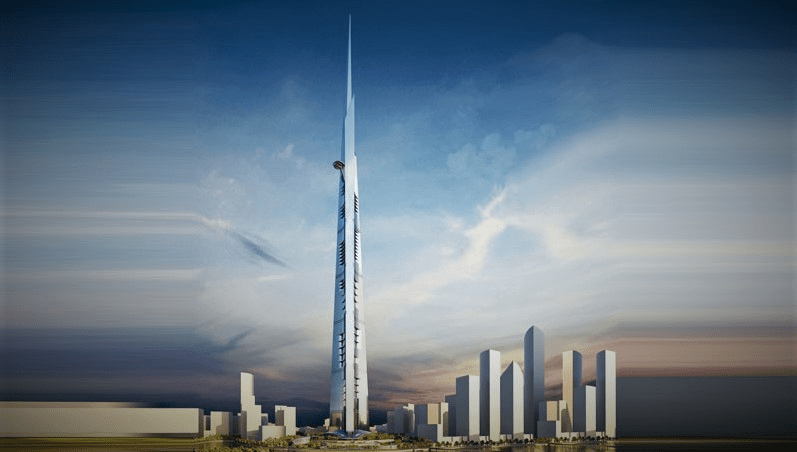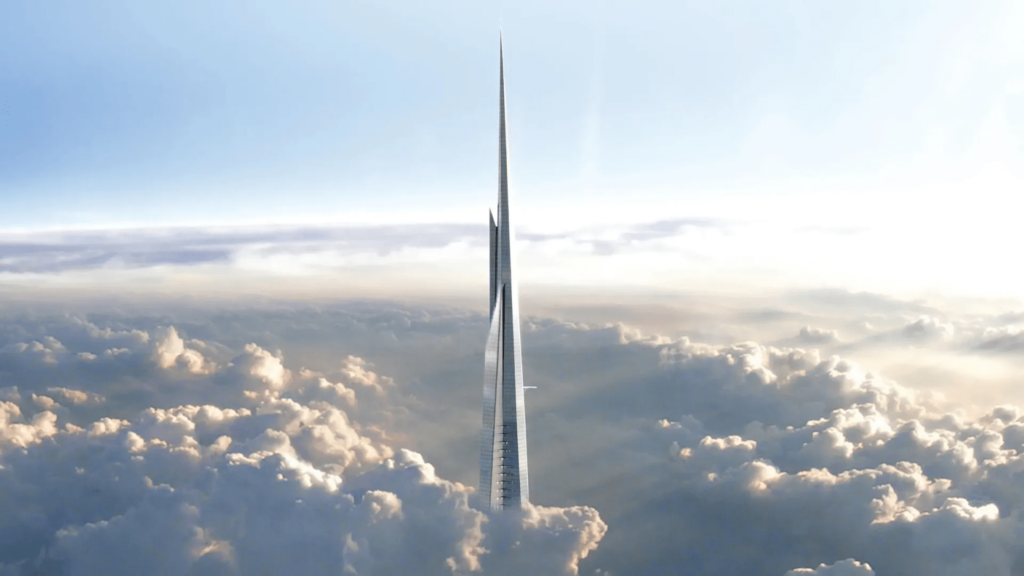Share via:
Jeddah, Saudi Arabia’s cosmopolitan hub on the Red Sea, is on the verge of making architectural history with the construction of the Jeddah Tower (previously known as the Kingdom Tower). Set to become the tallest skyscraper in the world upon completion, this ambitious project is not only a marvel of modern engineering but also a beacon of the Kingdom’s Vision 2030, which aims to diversify the Saudi economy and establish it as a global destination. This towering symbol of progress and innovation is redefining the skyline of Jeddah and promises to put the city firmly on the map as a premier urban destination.

With its mix of luxury, commerce, and sustainability, the Jeddah Tower will be a symbol of pride for Saudi Arabia and a draw for international tourists, businesses, and innovators alike. When complete, it will serve as a lasting testament to Saudi Arabia’s bold ambition and determination, inviting the world to witness the dawn of a new era on the Red Sea.

The Vision Behind Jeddah Tower
Jeddah Tower is more than just a skyscraper—it’s a statement. Commissioned by the Jeddah Economic Company, the project is an ambitious leap into the future, inspired by the Kingdom’s aspirations to drive forward innovation, tourism, and urban growth. Located in the heart of Jeddah Economic City, the tower represents the centerpiece of a larger urban development project that aims to transform Jeddah into a dynamic hub for business, leisure, and residential life.
Standing at an impressive planned height of over 1,000 meters, the Jeddah Tower is expected to surpass the current tallest building, Dubai’s Burj Khalifa, by a significant margin. The tower is designed to house luxury apartments, office spaces, hotels, and an observation deck, ensuring it will serve as both a business hub and a tourist magnet. The project highlights Saudi Arabia’s push to establish itself as a leader in architectural and engineering innovation.
Breaking Ground with Advanced Engineering
Building a structure of this magnitude requires cutting-edge engineering and technology. The Jeddah Tower will rise to such heights that it needs to withstand extreme wind forces, temperature variations, and structural stresses. To achieve this, architects and engineers have utilized an advanced structural system known as a “buttressed core,” which enables the tower to maintain stability and strength while reaching record-breaking heights.
The Jeddah Tower’s foundations alone are an engineering marvel, with nearly 270 piles drilled 105 meters into the ground to support the immense weight. Special materials and construction techniques are used to ensure the tower remains resilient in Jeddah’s coastal climate, where humidity, heat, and salt air pose unique challenges.
A Destination in the Sky: Luxury, Leisure, and Business
The Jeddah Tower will not only be a feat of engineering but also a fully immersive experience for visitors and residents. With 167 floors planned, it will house a Four Seasons hotel, upscale residences, luxury apartments, and corporate offices. The observation deck, perched over 600 meters above ground, will offer breathtaking views of the Red Sea and the cityscape below, making it the highest observation deck in the world.
Jeddah Economic City, where the tower is located, is a purpose-built urban district that will include shopping centers, entertainment venues, educational institutions, healthcare facilities, and parks. The aim is to create a city within a city—a place where people can work, live, and relax, all within the vicinity of the iconic Jeddah Tower.
Environmental Innovation at New Heights
The Jeddah Tower is not only an architectural masterpiece but also a testament to environmental awareness. The building will incorporate energy-efficient systems and sustainable practices, including high-performance glass facades to reduce energy consumption. The tower’s water conservation systems are designed to minimize waste, in alignment with the Kingdom’s broader commitment to sustainability under Vision 2030.
Jeddah Tower’s focus on sustainability makes it a prime example of how architectural advancements can be achieved responsibly. The tower’s designers are integrating solutions that optimize energy use, while the Jeddah Economic City plans to implement public transportation systems to promote an environmentally friendly lifestyle within the district.
Trivia: The Tower’s Unique Shape Was Inspired by Desert Plants
One fascinating fact about the Jeddah Tower is that its unique, tapering shape was inspired by the desert plant dracaena cinnabari, also known as the Dragon’s Blood Tree. This plant is native to the Arabian Peninsula and has a slender, elongated shape that enables it to thrive in desert conditions by efficiently storing water and enduring extreme heat. The tower’s design mimics this, allowing it to withstand the environmental challenges presented by Jeddah’s coastal desert climate while standing as a striking visual symbol that connects the past to the future.
Paving the Way for Saudi Arabia’s Visionary Future
As the Jeddah Tower reaches for the sky, it also embodies the aspirations of Saudi Arabia’s Vision 2030, with the goal of transforming the nation into a modern, diversified economy. The tower is not just a landmark but a beacon of progress, highlighting Jeddah as a city that embraces the future while staying true to its cultural heritage.
With its mix of luxury, commerce, and sustainability, the Jeddah Tower will be a symbol of pride for Saudi Arabia and a draw for international tourists, businesses, and innovators alike. When complete, it will serve as a lasting testament to Saudi Arabia’s bold ambition and determination, inviting the world to witness the dawn of a new era on the Red Sea.
Share via:
